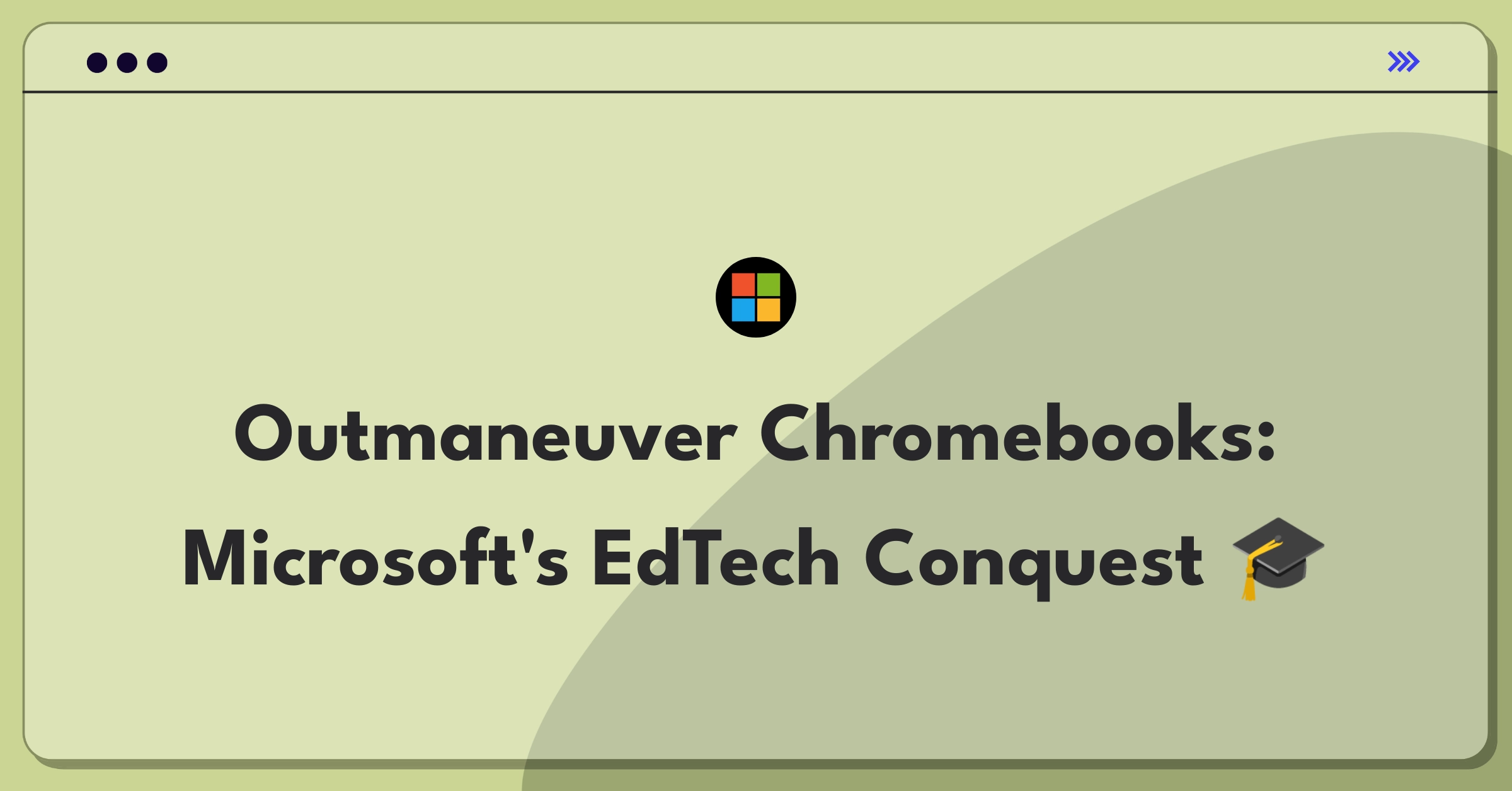Thank you for providing such a comprehensive framework for addressing this product strategy question. I'll use this structure to craft a detailed response to the question: "How can Microsoft compete with Chromebooks in the education space?" I'll present my answer as if I'm directly addressing the interviewer, using a first-person perspective and demonstrating deep product thinking and leadership.
Introduction
The strategic challenge we're facing is how Microsoft can effectively compete with Chromebooks in the education market. This is a critical question as it directly impacts our ability to maintain and grow our presence in a key sector that shapes future technology adoption. Our primary business objectives here would be to increase market share, drive long-term user adoption of Microsoft ecosystems, and establish a strong foundation for future revenue streams.
To address this challenge, I'll walk you through a comprehensive strategy that includes:
- Clarifying our strategic goals
- Analyzing the market and competition
- Defining our product vision and roadmap
- Prioritizing key initiatives
- Outlining an execution plan
- Establishing metrics and KPIs
- Managing risks and planning contingencies
Let's begin by ensuring we're aligned on the strategic context.
Step 1
Clarify the Strategic Goals (3-4 minutes)
Why it matters: Determines if we focus on protecting market share or aggressive expansion Expected answer: Balancing defense of Windows ecosystem with growth in cloud services Impact on approach: Would influence the balance between hardware and software/services strategies
Why it matters: Helps determine if we need to innovate new products or optimize existing ones Expected answer: Mix of mature (Windows) and growing (Microsoft 365 for Education) products Impact on approach: Would guide resource allocation between enhancing existing products and developing new ones
Why it matters: Ensures our strategy addresses real customer needs Expected answer: Diverse segments from K-12 to higher education, with varying budget and infrastructure constraints Impact on approach: Would tailor our value proposition and feature set to specific segment needs
Why it matters: Identifies opportunities and threats in the current market landscape Expected answer: Increased demand for affordable, cloud-based solutions with robust remote learning capabilities Impact on approach: Would influence our positioning and feature prioritization
Based on these insights, I'll proceed with the following key assumptions:
- We're balancing defense of our Windows ecosystem with growth in cloud services.
- We have a mix of mature and growing products in our education portfolio.
- Our target customers have diverse needs, with budget and infrastructure being key considerations.
- The market is trending towards affordable, cloud-based solutions with strong remote learning capabilities.
Tip
I'll take a moment to ensure these assumptions align with Microsoft's overall strategy before moving forward.
Subscribe to access the full answer
Monthly Plan
The perfect plan for PMs who are in the final leg of their interview preparation
$99 /month
- Access to 8,000+ PM Questions
- 10 AI resume reviews credits
- Access to company guides
- Basic email support
- Access to community Q&A
Yearly Plan
The ultimate plan for aspiring PMs, SPMs and those preparing for big-tech
$99 $33 /month
- Everything in monthly plan
- Priority queue for AI resume review
- Monthly/Weekly newsletters
- Access to premium features
- Priority response to requested question


.png)